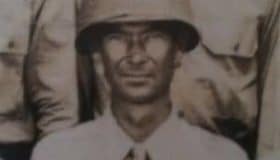Cher Ami: The Pigeon Hero Who Saved the Lost Battalion
May 6, 2025

In a war defined by mud, wire, and gunpowder, one of its most unlikely heroes had feathers instead of a uniform. Her name was Cher Ami—a carrier pigeon whose determination helped rescue nearly 200 American soldiers stranded behind enemy lines during World War I. In a time when the machinery of war was deafening, it was a tiny bird that carried the voice that stopped friendly fire.
The Chaos in the Argonne
October 1918. The Meuse-Argonne Offensive was in full force as the Allies launched one of the largest and bloodiest operations of the war. Deep within the thick French forest, a group of about 550 men from the U.S. Army’s 77th Division pushed forward. Their orders: hold their position and advance.
Commanded by Major Charles Whittlesey, these soldiers soon found themselves completely surrounded by German forces. Known later as the Lost Battalion, German forces cut them off from reinforcements, food, and water. Even worse, their own artillery mistakenly shelled them, unaware the battalion had already advanced ahead of schedule.
They were outnumbered, outgunned, and nearly out of time. Their last chance at survival rested on the wings of a pigeon.
Messenger in the Sky

The battalion carried several trained carrier pigeons—part of the U.S. Army Signal Corps’ standard communication strategy. The first two pigeons were either shot down or lost in the chaos. Only one bird remained: a brave little hen named Cher Ami, which means “dear friend” in French.
Attached to her leg was a handwritten plea:
“We are along the road parallel to 276.4. Our own artillery is dropping a barrage directly on us. For heaven’s sake, stop it.”
She was released into a sky thick with smoke and gunfire. German soldiers spotted her immediately and opened fire. One bullet tore through her chest. Another blinded her in one eye. Her right leg was mangled, barely attached by a sinew. Still, she flew.
Through pain, blood, and brutal skies, Cher Ami traveled 25 miles in just over 25 minutes. When she reached headquarters, she was barely alive—but the message remained attached to what was left of her leg.
Because of that message, the shelling stopped. Reinforcements were dispatched. Of the 550 men initially trapped, 194 survived—and they owed their lives to a pigeon that refused to fall.
More Than Just a Messenger

Cher Ami was one of over 600 birds used by the U.S. Army Signal Corps Pigeon Service during World War I. Pigeons were reliable, fast, and surprisingly accurate in navigating back to their home lofts—even through hostile skies. But Cher Ami’s courage, endurance, and sense of mission set her apart from the rest.
Army medics treated her wounds and later fitted her with a custom-made wooden leg. In recognition of her service, the French government awarded her the Croix de Guerre with palm—a high military honor for gallantry—and the Racing Pigeon Hall of Fame inducted her as one of its most celebrated members.
She died in June 1919, and the Army honored her not as a bird, but as a veteran. The Smithsonian Institution preserved her body, where she rests today as generations continue to marvel at the tiny warrior who flew through hell to deliver hope.
A Legacy Etched in Feathers

Cher Ami’s story is not just a footnote in military history—it’s a reminder that valor knows no species. In the darkest moments of war, courage often comes from unexpected places.
Her legacy also shines a light on the animals that have served alongside soldiers throughout history—whether carrying messages, sniffing out danger, or offering companionship. Their loyalty and sacrifice are real, though rarely celebrated.
Cher Ami didn’t understand medals or missions. But she knew how to fly—and she knew where home was. That was enough to change history.
Sometimes, the smallest wings carry the greatest hope.
Whether remembered in textbooks or honored in museums, Cher Ami’s flight reminds us that heroism comes in all forms—even feathered ones.

Mike Isaac-Jimenez is a 25-year U.S. Air Force Veteran transitioning into retirement in San Antonio, TX, and currently serving as a SkillBridge intern with Soldiers’ Angels. He holds a B.S. in Technical Management (Project Management) from Embry-Riddle Aeronautical University, along with A.A.S. degrees in Mechanical & Electrical Technology and Mechanical Engineering.


